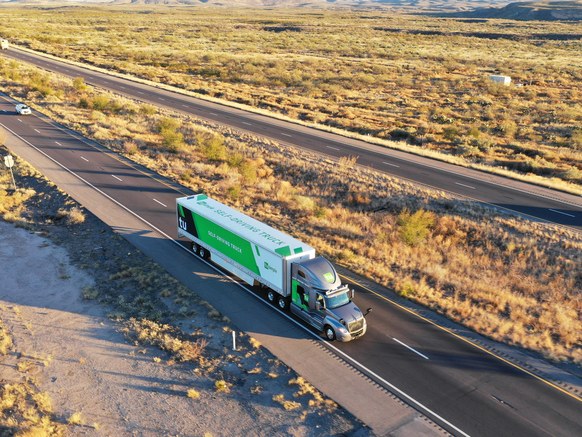
Breaking News
 LIVE ELECTION RESULTS: New York mayor, NJ & VA governor, Prop 50, Trump endorsements, latest vote
LIVE ELECTION RESULTS: New York mayor, NJ & VA governor, Prop 50, Trump endorsements, latest vote
 Sen. Markwayne Mullin Reveals Schumer Held Secret BACKROOM MEETING...
Sen. Markwayne Mullin Reveals Schumer Held Secret BACKROOM MEETING...
 RIP NYC - Muslim Communist Zohran Mamdani Wins New York City Mayoral Race
RIP NYC - Muslim Communist Zohran Mamdani Wins New York City Mayoral Race
 Dramatic Footage Shows UPS Cargo Jet Crashing At Louisville Airport
Dramatic Footage Shows UPS Cargo Jet Crashing At Louisville Airport
Top Tech News
 Japan just injected artificial blood into a human. No blood type needed. No refrigeration.
Japan just injected artificial blood into a human. No blood type needed. No refrigeration.
 The 6 Best LLM Tools To Run Models Locally
The 6 Best LLM Tools To Run Models Locally
 Testing My First Sodium-Ion Solar Battery
Testing My First Sodium-Ion Solar Battery
 A man once paralyzed from the waist down now stands on his own, not with machines or wires,...
A man once paralyzed from the waist down now stands on his own, not with machines or wires,...
 Review: Thumb-sized thermal camera turns your phone into a smart tool
Review: Thumb-sized thermal camera turns your phone into a smart tool
 Army To Bring Nuclear Microreactors To Its Bases By 2028
Army To Bring Nuclear Microreactors To Its Bases By 2028
 Nissan Says It's On Track For Solid-State Batteries That Double EV Range By 2028
Nissan Says It's On Track For Solid-State Batteries That Double EV Range By 2028
 Carbon based computers that run on iron
Carbon based computers that run on iron
 Russia flies strategic cruise missile propelled by a nuclear engine
Russia flies strategic cruise missile propelled by a nuclear engine
 100% Free AC & Heat from SOLAR! Airspool Mini Split AC from Santan Solar | Unboxing & Install
100% Free AC & Heat from SOLAR! Airspool Mini Split AC from Santan Solar | Unboxing & Install
The USPS Tests Out Self-Driving Trucks for Hauling Mail

The United States Postal Service has a lot of ways to move the 484.8 million pieces of mail it handles every day. In rural Alaska, postal workers run hovercraft, prop planes, and the occasional parachute. They pilot boats in the Louisiana bayou and snowmobiles in Colorado, Minnesota, Montana, Utah, and Wisconsin. To reach the Havasupai Indian Reservation town of Supai at the bottom of the Grand Canyon, they go by mule train. And now, to carry the mail from Phoenix to Dallas, they're letting robots do the work.
Alex Davies covers autonomous vehicles and other transportation machines for WIRED.
Starting Tuesday, self-driving trucks built by startup TuSimple will haul trailers full of mail and packages all by themselves. Well, mostly by themselves: The 18-wheelers will have a certified driver and safety engineer aboard, who will handle the driving on surface streets and take control from the robot as needed. The pilot project will last two weeks and include five round trips between the cities' distribution hubs.
For the postal service, autonomy might help it reverse an ugly financial situation. The agency, which receives no tax dollars, has posted a loss every year for more than a decade. Its five-year strategic plan, covering 2017–2021, is full of talk about being open to innovative solutions. In February, it issued a request for information saying it was investigating how autonomous vehicles could fit into its fleet. It's working with the University of Michigan on a self-driving truck to handle rural routes. In a statement, a spokesperson called the pilot "just one of many ways the postal service is innovating and investing in its future."

TuSimple bills itself as a master of computer vision. Its cameras can see and identify threats about 1,000 meters away—more than half a mile and much farther than any lidar.
TuSimple
For TuSimple, it's the chance to make some (undisclosed) revenue, pick up some press coverage, and to test its technology against the rigors of a real-world delivery service. The startup, which has headquarters in San Diego and Beijing, bills itself as a master of computer vision. Its cameras can see and identify threats about 1,000 meters away—more than half a mile and much farther than any lidar laser-scanning system. But this pilot is more of a logistical than a technological exam.



